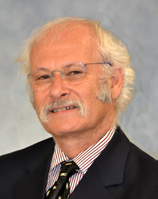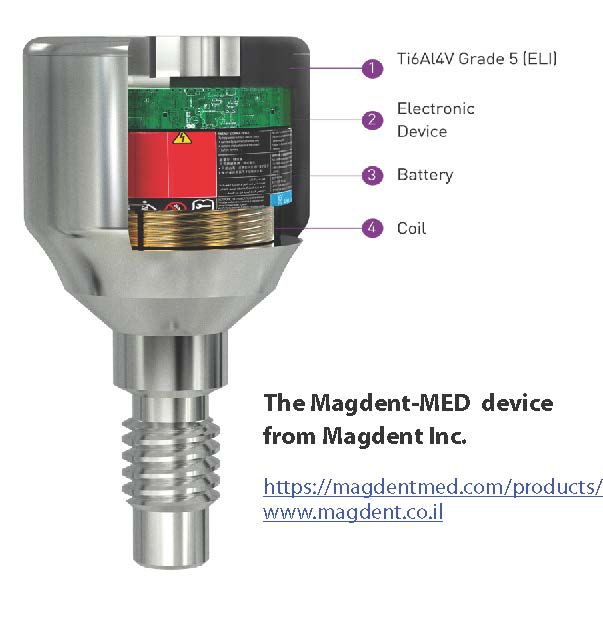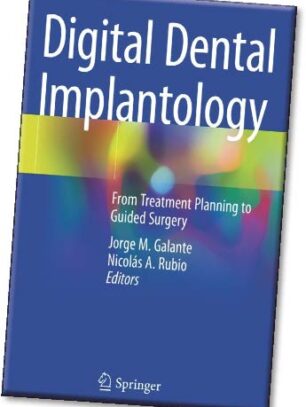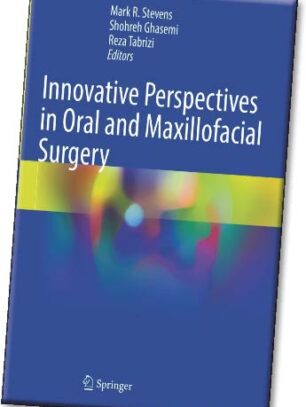STOMATOLOGY EDU JOURNAL 2022 Volume 9 Issue 3-4
CURRENT ISSUE
GUEST EDITORIAL
Nomen est omen – the difficult scientific classification of materials
Names are used to identify and classify. Your family name, surname and birthday are together an excellent identifier. I know another dentist named Jean-François Roulet in Brazil; however, his birthday is different. In the modern world, this may be replaced by a number such as the Swiss AHV-number = Army identification number, which is derived from the person’s name and birthday, or in the USA the Social Security number [1].
In science, names are used to classify as well. Examples are “mammals” (a warm-blooded vertebrate animal of a class that is distinguished by the possession of hair or fur, the secretion of milk by females for the nourishment of the young, and (typically) the birth of live young), “fish” (a limbless cold-blooded vertebrate animal with gills and fins and living wholly in water), or “metal” (a solid material that is typically hard, shiny, malleable, fusible, and ductile, with good electrical and thermal conductivity). However, names may be used as well to deceive or hide something. (read more)
Jean-François ROULET
DDS, Habil, Prof hc, Dr hc, Professor
University of Florida, Gainesville, FL, USA
Stomatology Edu Journal
Founding Editor
IN MEMORIAM
Pages of history: Professor Lucian Ene – a teacher, doctor and scientist
 Lucian Ene, a renowned dentist and professor, passed away in October 2022 at the age of 96. He will be deeply missed by his family, friends, colleagues, and patients.
Lucian Ene, a renowned dentist and professor, passed away in October 2022 at the age of 96. He will be deeply missed by his family, friends, colleagues, and patients.
Professor Lucian Ene was born on the 28th of May, 1926 in Balta Doamnei, Ploiești Region and in 1953 graduated from the Faculty of Dental Medicine, which had been established in 1948, being one of the first students of this faculty. Previously, dentistry was a specialisation after studying general medicine.
Art. 89 of the 1898 education laws state that “pharmaceutical and dental education” are part of the Faculty of Medicine in Bucharest, regarding “the courses and laboratories, as well as the placements in hospitals and mandatory examinations which must be passed in order to obtain the title of Dentist” [1].
In his first years as a dental student, Professor Lucian Ene developed a love for dentistry. He pursued his passion and became a respected dentist in his community, known for his expertise and compassionate approach to patient care. He graduated as a Valedictorian, being awarded a republican scholarship. He also attended courses at the University in Paris. (read more)
ORIGINAL ARTICLES
- POSTUROLOGY
Effects of masticatory movements on the head, trunk and body sway during the standing position
DOI: https://doi.org/10.25241/stomaeduj.2022.9(3-4).art.1
 One of the purposes in dental prosthetic treatment includes the recovery of the masticatory function. Mastication involves not only simple sequential jaw-opening and jaw-closing movements but also complex tongue movements, coordination of lip, and cheek movements and is associated with head movement to facilitate the intraoral transport of food from ingesting to swallowing [1-3].
One of the purposes in dental prosthetic treatment includes the recovery of the masticatory function. Mastication involves not only simple sequential jaw-opening and jaw-closing movements but also complex tongue movements, coordination of lip, and cheek movements and is associated with head movement to facilitate the intraoral transport of food from ingesting to swallowing [1-3].
It has been reported that masticatory movements affect many functions of the whole body, including the awakening effect [4,5], promotion of cerebral function [6], reaction latency to external disturbances [7], and are closely related to health promotion [8].
There is a report in the literature that the head moves in rhythmical coordination with the mandibular movement during mastication [9]. The height of the body’s center of mass is somewhere between 55% (women) and 57% (men) of the standing height [10], and the small area of the sole of the foot supports the weight of the whole body. Therefore, stability in head posture is indispensable to the control of the body posture during the standing position. (read more)
Citation: Shima K, Sakaguchi K, Mehta NR, Maruyama T, Correa LP, Yokoyama A. Effects of masticatory movements on the head, trunk and body sway during the standing position. Stoma Edu J. 2022;9(3-4):81-87.
Authors:
Keiko Shima:
Kiwamu Sakaguchi: ORCIDiD | ResearchGate | PubMed | Google Scholar
Noshir R. Mehta: ORCIDiD | ResearchGate | PubMed | Google Scholar
Tomoaki Maruyama: ORCIDiD | PubMed | Google Scholar
Leopoldo P. Correa: ORCIDiD | ResearchGate | PubMed | Google Scholar
Atsuro Yokoyama: ORCIDiD | ResearchGate | PubMed | Google Scholar
- PERIODONTOLOGY
DOI: https://doi.org/10.25241/stomaeduj.2022.9(3-4).art.2
 The applications of Photobiomodulation (PBM) or Low-Level Laser Therapy (LLLT) are gaining popularity in the field of dentistry. These lasers have wavelengths that range between 600 and 1,100 nm and interact with tissues via non-thermal photochemical and biological mechanisms. The low-level laser (LLL) light is absorbed in the mitochondria by chromophores including the protein cytochrome-c oxidase which then increases the internal activity and three events occur as a result: An increase in adenosine triphosphate (ATP), the main energy source for the majority of cellular functions which accelerates the healing process; modulation of reactive oxygen species (ROS) which activates transcription factors positively impacting cellular repair and healing; and temporary release of nitrous oxide (NO), a potent vasodilator, which improves circulation as well as lymphatic drainage. Therefore, clinically these lasers are known to reduce pain, inflammation and promote wound healing. Due to these properties, researchers are constantly striving to find different therapeutic applications of this non-invasive treatment modality [1]. (read more)
The applications of Photobiomodulation (PBM) or Low-Level Laser Therapy (LLLT) are gaining popularity in the field of dentistry. These lasers have wavelengths that range between 600 and 1,100 nm and interact with tissues via non-thermal photochemical and biological mechanisms. The low-level laser (LLL) light is absorbed in the mitochondria by chromophores including the protein cytochrome-c oxidase which then increases the internal activity and three events occur as a result: An increase in adenosine triphosphate (ATP), the main energy source for the majority of cellular functions which accelerates the healing process; modulation of reactive oxygen species (ROS) which activates transcription factors positively impacting cellular repair and healing; and temporary release of nitrous oxide (NO), a potent vasodilator, which improves circulation as well as lymphatic drainage. Therefore, clinically these lasers are known to reduce pain, inflammation and promote wound healing. Due to these properties, researchers are constantly striving to find different therapeutic applications of this non-invasive treatment modality [1]. (read more)
Citation: Al Hajeb F, Zakaria H, D’Souza J, Hamsho W, Al Jadaan O, Al Khabuli J. Low-Level Laser Periodontal Therapy in Diabetic Patients: A Randomized Controlled Clinical Trial – Pilot Study. Stoma Edu J. 2022;9(3-4):88-94.
Authors:
Fares Al Hajeb: ORCIDiD |Google Scholar
Hala Zakaria: ORCIDiD | ResearchGate | PubMed | Google Scholar
Jovita D’Souza: ORCIDiD | ResearchGate | PubMed | Google Scholar
Wael Hamsho: ORCIDiD | Google Scholar
- ORTHODONTICS
DOI: https://doi.org/10.25241/stomaeduj.2022.9(3-4).art.3
 From the early steps in orthodontic science, the position and inclination of the lower incisor has been considered essential in diagnosis, treatment planning and retention. In 1941 Holly Broadbent correlated normal dentofacial growth with incisor mandibular plane angle and set the basis for cephalometric analysis [1]. In 1943 Margolis was the first to correlate lower incisor inclination with chin position [2]. Tweed advocated that the mandibular incisors must always be positioned upright on the alveolar process in order to achieve harmony in the lower facial third [3].
From the early steps in orthodontic science, the position and inclination of the lower incisor has been considered essential in diagnosis, treatment planning and retention. In 1941 Holly Broadbent correlated normal dentofacial growth with incisor mandibular plane angle and set the basis for cephalometric analysis [1]. In 1943 Margolis was the first to correlate lower incisor inclination with chin position [2]. Tweed advocated that the mandibular incisors must always be positioned upright on the alveolar process in order to achieve harmony in the lower facial third [3].
Class II malocclusion is present in approximately
one-third of the patients seeking orthodontic treatment [4]. Correction of Class II discrepancies is achieved with a variety of extraction and non-extraction approaches, maxillary expansion, use of headgears, functional appliances, fixed-functional appliances, Class II elastics, with or without skeletal anchorage and other [5]. (read more)
Citation: Tsolaki A, Tsami M, Chatzigianni A, Papadopoulos AM. Mandibular incisor inclination in patients with class II malocclusion: comparison of treatment effects through time. Stoma Edu J. 2022;9(3-4):95-102.
Authors:
Anastasia Tsolaki: ORCIDiD | Google Scholar
Maria Tsami: ORCIDiD | Google Scholar
Athina Chatzigianni: ORCIDiD | ResearchGate | PubMed | Google Scholar | Scopus
Moschos A. Papadopoulos: ORCIDiD | ResearchGate | PubMed | Google Scholar | Scopus
- GERODONTOLOGY
Oral rehabilitation and quality of life in psychiatric patients undergoing deinstitutionalization
DOI: https://doi.org/10.25241/stomaeduj.2022.9(3-4).art.4
 People with mental disabilities frequently present poor oral health and require extensive dental treatment. Dental caries and periodontal disease are among the most common conditions affecting patients with psychiatric disorders [1]. Poor oral health can lead to pain, eating problems, sleeping disorders, and diminished self-esteem, all of which can affect an individual’s quality of life. Oral health-related quality of life (OHRQOL) is a multidimensional construct that has become a significant parameter to assess how oral health impacts daily function, well-being, and social interaction 1.
People with mental disabilities frequently present poor oral health and require extensive dental treatment. Dental caries and periodontal disease are among the most common conditions affecting patients with psychiatric disorders [1]. Poor oral health can lead to pain, eating problems, sleeping disorders, and diminished self-esteem, all of which can affect an individual’s quality of life. Oral health-related quality of life (OHRQOL) is a multidimensional construct that has become a significant parameter to assess how oral health impacts daily function, well-being, and social interaction 1.
There is growing interest in quantifying the consequences of the disease that affect function, comfort, and the ability to carry out daily activities or the impact of health care services or the treatment of diseases. In general, dysfunction, discomfort, or disability measures can be used to assess the “burden of disease” or collectively the social impact [2]. (read more)
Citation: Morasso AM, Pérez Meyer ML, Thefs S, D´Eramo L, Bordoni N, Squassi AF. Oral rehabilitation and quality of life in psychiatric patients undergoing deinstitutionalization. Stoma Edu J. 2022;9(3-4):103-107.
Authors:
Ana María Morasso: ORCIDiD | PubMed | Google Scholar
María Lujan Pérez Meyer: ORCIDiD | ResearchGate | Google Scholar
Sergio Thefs: ORCIDiD
Luciana D´Eramo: ORCIDiD | Google Scholar
Noemí Bordoni: ORCIDiD | PubMed | Google Scholar
Aldo F. Squassi: ORCIDiD | ResearchGate | PubMed | Google Scholar
REVIEW ARTICLE
- ORAL MEDICINE
The oral effects of e-cigarettes – a literature review
DOI: https://doi.org/10.25241/stomaeduj.2022.9(3-4).art.5
 Over the last few years, electronic cigarettes (e-cigarettes) have gained greater and greater popularity. According to a 2011 survey by the WHO (World Health Organisation), 7 million people used e-cigarettes regularly worldwide at the time, and this number increased to 41 million by 2018 [1]. Some forecasts indicate that the popularity of e-cigarettes will not change; furthermore, as of 2021, there are an estimated 55 million daily users [1]. Concerning the health effects of e-cigarettes, they are thought to be a healthy alternative to smoking, a notion rooted in the marketing strategy and other factors of the tobacco industry. Another problem is that these products are accessible to a younger demographic: in 2020 alone in the USA, 19.6% of surveyed secondary school students used e-cigarettes, and 22.5% used them as a daily routine [2]. The harmful effects of traditional cigarettes are already established knowledge in people’s awareness, thanks to widespread effort to combat the habit of smoking in the population; however, when it comes to e-cigarettes, no similar action has been underway, allowing their popularity to increase on and on. Over the last years worldwide, countless research studies have aimed to describe the health effects of electronic cigarettes, which indicates that there are many questions without answers. For this reason, this article aims to summarize present knowledge concerning the oral effects of using electronic cigarettes. (read more)
Over the last few years, electronic cigarettes (e-cigarettes) have gained greater and greater popularity. According to a 2011 survey by the WHO (World Health Organisation), 7 million people used e-cigarettes regularly worldwide at the time, and this number increased to 41 million by 2018 [1]. Some forecasts indicate that the popularity of e-cigarettes will not change; furthermore, as of 2021, there are an estimated 55 million daily users [1]. Concerning the health effects of e-cigarettes, they are thought to be a healthy alternative to smoking, a notion rooted in the marketing strategy and other factors of the tobacco industry. Another problem is that these products are accessible to a younger demographic: in 2020 alone in the USA, 19.6% of surveyed secondary school students used e-cigarettes, and 22.5% used them as a daily routine [2]. The harmful effects of traditional cigarettes are already established knowledge in people’s awareness, thanks to widespread effort to combat the habit of smoking in the population; however, when it comes to e-cigarettes, no similar action has been underway, allowing their popularity to increase on and on. Over the last years worldwide, countless research studies have aimed to describe the health effects of electronic cigarettes, which indicates that there are many questions without answers. For this reason, this article aims to summarize present knowledge concerning the oral effects of using electronic cigarettes. (read more)
Citation: Györkös ÁI, Kulcsár N, Hermann P, Kispélyi B. The oral effects of e-cigarettes – a literature review. Stoma Edu J. 2022;9(3-4):109-114.
Authors:
Áron Imre Györkös: ORCIDiD
Norbert Kulcsár: ORCIDiD
Péter Hermann: ORCIDiD | ResearchGate | PubMed | Google Scholar | Scopus
Barbara Kispélyi: ORCIDiD | ResearchGate
- FORENSIC ODONTOLOGY
Virtopsy: a new developing science in forensic odontology
DOI: https://doi.org/10.25241/stomaeduj.2022.9(3-4).art.6
 In the field of medicine, conventional autopsy procedure has a mainstay role. It aids in establishing the final diagnosis, relates the cause of death to the associated pathologies as well as it explains the interaction between them. According to underlying purpose of this procedure, there are mainly 2 types of autopsies: Clinical and Forensic. Clinical autopsy is one which is performed in a clinical set up, by the pathologist with the positive consent of the family members of deceased to find out the cause of death. Forensic autopsy is performed in case of suspicious, violent, mass disaster or unknown cause of death [1].
In the field of medicine, conventional autopsy procedure has a mainstay role. It aids in establishing the final diagnosis, relates the cause of death to the associated pathologies as well as it explains the interaction between them. According to underlying purpose of this procedure, there are mainly 2 types of autopsies: Clinical and Forensic. Clinical autopsy is one which is performed in a clinical set up, by the pathologist with the positive consent of the family members of deceased to find out the cause of death. Forensic autopsy is performed in case of suspicious, violent, mass disaster or unknown cause of death [1].
Conventional autopsy is an invasive procedure which includes dissection, interpretation and cataloguing [2]. The corpse is handed over to family for last rituals after performing conventional autopsy procedure and thus, it is not possible to re-examine the decision if needed, while practicing conventional autopsy [3]. Sometimes, family of the deceased may not give consent for conventional autopsy owing to possible mutilation involved and also for certain religion believes [4,5]. These drawbacks of conventional autopsy led to genesis of emerging branch, virtual autopsy procedure, namely “Virtopsy” [6].
Because of the Covid-19 pandemic, the whole world is being adjusting itself to the “new normal” things. Social distancing has become major part of day-to-day life as well as medical field. Thus, it is desirable to have every procedure touch-free and online during victim identification for forensic purposes as well. Virtopsy is a step forward in this direction.
The research question formulated was ‘Can virtopsy be equally efficient as conventional autopsy in forensic odontology?’. This literature review focuses on history, equipment, robotic science, methodology, application, advantages and disadvantages of virtopsy in forensic odontology. (read more)
Citation: Phulari RGS, Solanki B, Vasavada D. Virtopsy: a new developing science in forensic odontology. Stoma Edu J. 2022;9(3-4):115-119.
Authors:
Rashmi GS Phulari: ORCIDiD | Publons | ResearchGate | CrossRef | PubMed | Google Scholar | Scopus
Bharvi Solanki: ORCIDiD
Dharmesh Vasavada: ORCIDiD | ResearchGate | PubMed | Google Scholar | Scopus
CASE REPORT
- ORAL REHABILITATION
An anterior reconstruction: increase the occlusal vertical dimension or reduce periodontal support?
DOI: https://doi.org/10.25241/stomaeduj.2022.9(3-4).art.7
 The management of dental wear is frequently encountered in prosthodontic practice [1]. Interventions can range from straightforward lifestyle advice to complete-mouth rehabilitation [2]. While contemporary dentistry advocates the conservation of tooth structure and pulpal vitality [3] and the application of adhesive dentistry with minimal tooth preparation [4], complete-mouth rehabilitation typically involves extensive tooth preparation. The purpose of this clinical report was to document a clinical situation which was managed at minimal biological cost and with straightforward implementation. (read more)
The management of dental wear is frequently encountered in prosthodontic practice [1]. Interventions can range from straightforward lifestyle advice to complete-mouth rehabilitation [2]. While contemporary dentistry advocates the conservation of tooth structure and pulpal vitality [3] and the application of adhesive dentistry with minimal tooth preparation [4], complete-mouth rehabilitation typically involves extensive tooth preparation. The purpose of this clinical report was to document a clinical situation which was managed at minimal biological cost and with straightforward implementation. (read more)
Citation: Ré JP, Orthlieb JD, Giraudeau A, Casazza E. An anterior reconstruction: increase the occlusal vertical dimension or reduce periodontal support?. Stoma Edu J. 2022;9(3-4):121-124.
Authors:
Jean-Philippe Ré: ORCIDiD | ResearchGate | PubMed | Google Scholar
Jean-Daniel Orthlieb: ORCIDiD | ResearchGate | CrossRef | PubMed | Google Scholar | Scopus
Anne Giraudeau: ORCIDiD | ResearchGate | PubMed | Google Scholar | Scopus
Estelle Casazza: ORCIDiD | ResearchGate | PubMed | Google Scholar | Scopus
PRODUCT NEWS
The Magdent – MED device ensures an increase in the healing rate of dental implant procedures
Titanium dental implants are widely used in dentistry to restore single to total dentition. Despite the new improvements brought to them, the healing period in which the implants should remain unloaded is 3-6 months.It has been demonstrated that a pulsed electromag-netic field (PEMF) contributes to the increase of bone regeneration in a number of clinical fields, including dentistry. Recently, a miniaturized electromagnetic device (MED) was introduced into the therapeutic arsenal, which fits most dental implants. MED is shaped as a simple healing abutment, it is easily screwed into the implant and removed at the end of the treatment period. (read more)
Florin – Eugen Constantinescu
DMD, PhD Student
Editorial Director, Product News
DOI: https://doi.org/10.25241/stomaeduj.2022.9(3-4).prodnews.1
BOOKS REVIEW
Color Science and Shade Selection in Operative Dentistry
Essential Elements for Clinical Success
Editors: Dayane Oliveira
Publisher: Springer Nature, Switzerland
DOI: https://doi.org/10.25241/stomaeduj.2022.9(3-4).bookreview.1
Digital Dental Implantology
From Treatment Planning to Guided Surgery
Editors: Jorge M. Galante, Nicolás A. Rubio
Publisher: Springer Nature, Switzerland
DOI: https://doi.org/10.25241/stomaeduj.2022.9(3-4).bookreview.2
Integrated Procedures in Facial Cosmetic Surgery
Editors: Seied Omid Keyhan, Tirbod Fattahi, Shahrokh C. Bagheri, Behnam Bohluli, Mohammad Hosein Amirzade-Iranaq
Publisher: Springer Nature, Switzerland
DOI: https://doi.org/10.25241/stomaeduj.2022.9(3-4).bookreview.3
Paediatric Dentistry for the General Dental Practitioner
Editors: Sondos Albadri, Claire L. Stevens
Publisher: Springer Nature, Switzerland
DOI: https://doi.org/10.25241/stomaeduj.2022.9(3-4).bookreview.4
Functional Biomaterials
Drug Delivery and Biomedical Applications
Editors: Sougata Jana, Subrata Jana
Publisher: Springer Nature, Switzerland
DOI: https://doi.org/10.25241/stomaeduj.2022.9(3-4).bookreview.5
Innovative Perspectives in Oral and Maxillofacial Surgery
Editors: Mark R. Stevens, Shohreh Ghasemi, Reza Tabrizi
Publisher: Springer Nature, Switzerland
DOI: https://doi.org/10.25241/stomaeduj.2022.9(3-4).bookreview.6









